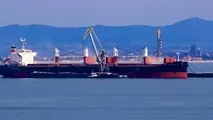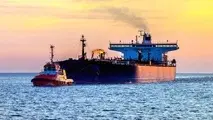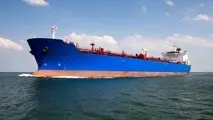Proposal to ban carriage of high sulphur fuel ships without scrubbers to be discussed at IMO

From 2020, a ship will have no legitimate reason to bunker fuel with more than 0.50% sulphur unless it has approved abatement technology or a valid exemption to trial such technology. The only other valid reason would be a situation where the ship could not obtain marine fuel with less than 0.50% sulphur because there was no availability in its bunkering port at the time.
But MARPOL Annex VI does not ban a ship from carrying high sulphur fuel oil (HSFO); it only regulates sulphur oxide (SOx) emissions which have to be met either through using low sulphur fuel or cleaning SOx out of the exhaust gas. As discussed at a recent IBIA forum, this leaves some doubts about how effectively MARPOL Annex VI can be enforced.
signatories to MARPOL Annex VI can only take enforcement actions for non-compliance occurring within their territorial waters. If they have evidence that ships were using non-compliant fuel prior to entering their territorial waters, all they can do about that is to report it to the ship’s flag State. It is then up to the flag State to ensure vessels flying their flag comply.
In February 2018, the 5th session of the International Maritime Organization’s Sub-Committee on Pollution Prevention and Response (PPR 5) is set to discuss measures to “promote consistent implementation of the 0.50% global sulphur limit” that takes effect from the start of 2020. There are plans to build on proposals, already discussed briefly at PPR 4 in January this year, to make enforcement simpler by introducing a ban on the carriage of high sulphur fuel oil (HSFO) as bunkers on ships without scrubbers.
IBIA presented a suite of proposals to PPR 4 regarding implementation of the 0.50% sulphur limit in 2020. Our submission included this paragraph: “It is already within the powers of PSCOs to enforce compliance within their coastal waters to ensure the coastal State is reaping the air quality benefits of the regulation. Should evidence emerge that implementation is uneven, measures to enhance more universal compliance may be considered, for example by making it an offence under the regulation for a ship to carry fuels above 0.50% sulphur unless that ship has approved alternative compliance methods installed, or a valid exemption.”
Norway suggested to PPR 4 that the Sub-Committee should consider “a specific prohibition” to carry bunkers exceeding 0.50% sulphur right away, and intends to bring a more detailed proposal to PPR 5 in the hope of introducing a carriage-ban as soon as possible.
Concrete suggestions were not discussed in great detail at PPR 4 in January because the main task given to the Sub-Committee from the 70th session of the Marine Environment Protection Committee (MEPC 70) was to identify “justification and scope for a new output on what additional measures may be developed to promote consistent implementation of the 0.50% global sulphur limit”. A “new output” means adding a new work item to the IMO’s agenda, and can only be approved by the IMO’s main Committees. PPR 4 developed the new output proposal and it was approved by MEPC 71 I July, meaning PPR can now discuss and make recommendations to MEPC on concrete proposals.
A carriage ban on HSFO as bunkers for ships without valid exemptions could make it easier to enforce the global sulphur cap as this can be detected in port, either by document check or by sampling and analysis of the fuel oil. During PPR 4, one suggestion that came up took that idea a step further, namely to implement a ban both on the carriage and sales of HSFO to ships. This suggestion would, however, go beyond IMO’s remit.
Timing & legal perspective
It isn’t clear yet how a carriage ban could be written into the regulation. It would require changes to MARPOL Annex VI and this usually requires MEPC to specifically approve a “new output” to amend the regulation.
However, the scope for the “new output” on implementation of the 0.50% sulphur limit approved at MEPC 71 did include a paragraph to consider “any consequential regulatory amendments and/or guidelines necessary to address issues raised or otherwise considered necessary to ensure consistent implementation” so it might be allowed under this output.
In theory, if a regulatory change to introduce such a carriage ban was agreed at PPR 5, sent to MEPC 72 for approval and then formally adopted at MEPC 73, it could enter into force as soon as March 1, 2020.
There are already some safeguards in place to prevent ships from taking on bunkers above 0.50% sulphur post 1 January 2020. Already today, a ship has to identify in its International Air Pollution Prevention Certificate whether it uses compliant fuel oil or has an approved equivalent arrangement (e.g. a scrubber). And from 1 January 2019, amendments to appendix V of MARPOL Annex VI regarding information to be included in the bunker delivery note (BDN) requires suppliers to obtain a notification from the purchaser that fuel oil exceeding 0.50% sulphur is intended for use only in combination with an equivalent means of compliance or that the ship has a relevant exemption to conduct trials of SOx emission reduction technology.
The question is whether most IMO member states believe the existing regulatory framework is sufficient to ensure that ships comply with the applicable sulphur limits, or whether they believe it is necessary to enhance the ability of PSCOs to take action against non-compliance occurring in international waters, which is currently the responsibility of the flag State.
If a HSFO carriage ban is agreed on, there are other considerations too. EGCS is not the only technology solution; other technology solutions may emerge that involves either blending HSFO with very low sulphur fuels onboard, or ship-based desulphurisation. In fact, one company has informed IBIA that it is developing a ship-based desulphurisation unit. Ships with such alternative technologies would need to be exempt from a HSFO carriage ban, but would perhaps need to demonstrate that the fuel entering the engine meets applicable the limit, or demonstrate compliance by measuring its SOx emissions.



